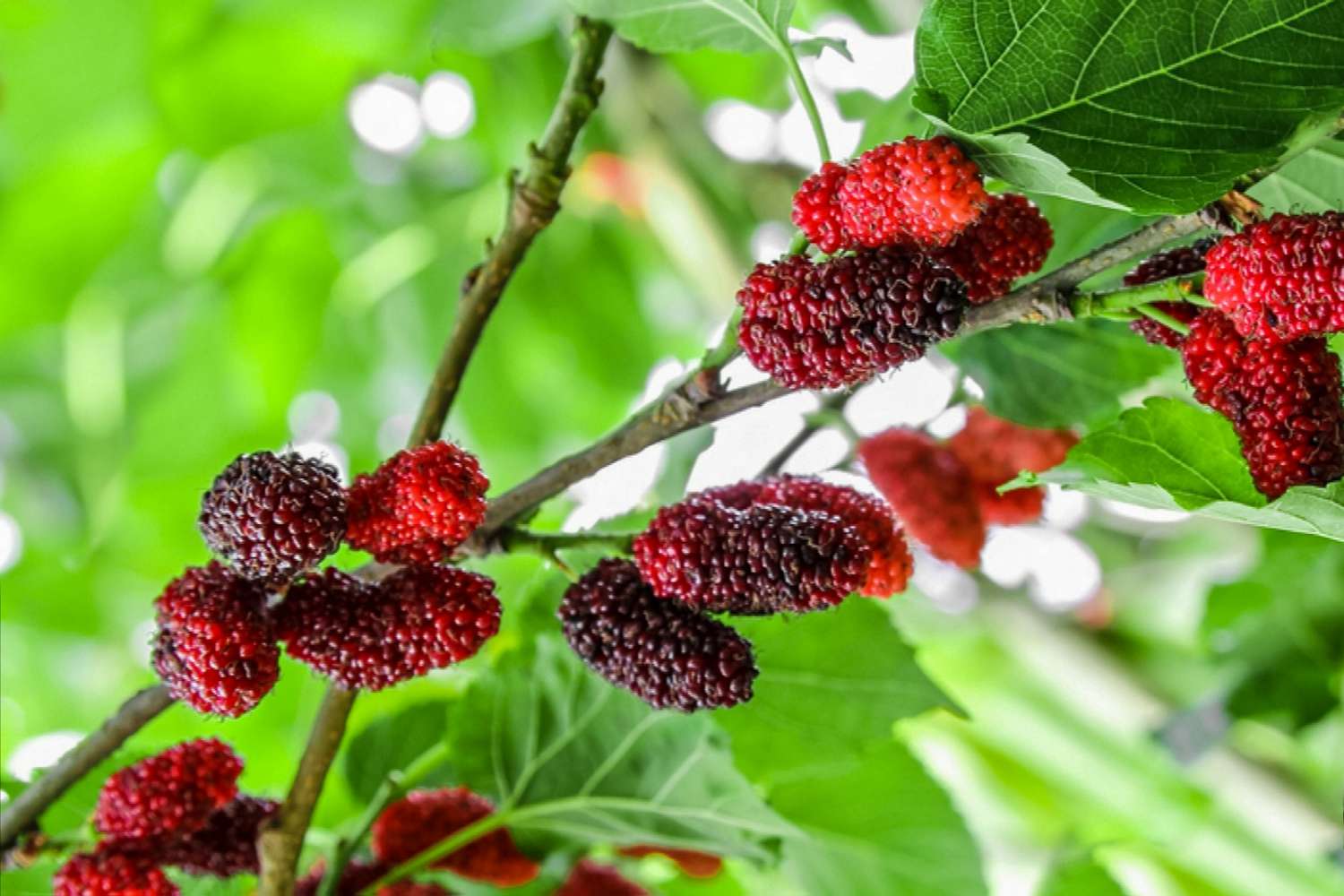Want a majestic shade tree without the sticky fruit mess? The fruitless mulberry (Morus alba) might be your perfect match! This comprehensive guide covers everything you need to know about this low-maintenance landscaping star, from its unique characteristics and diverse cultivars to planting, care, and potential challenges. Discover the simple elegance of the fruitless mulberry – shade without the cleanup!
Discovering the Fruitless Mulberry
Originally from China, the mulberry tree boasts a rich history intertwined with silk production, serving as the primary food source for silkworms for over 4,000 years! Today, its value extends far beyond silk, gracing landscapes worldwide with effortless elegance. The fruitless mulberry, a specific cultivar bred to skip fruit production altogether, offers all the beauty of its fruiting counterpart without the mess. This makes it a particularly attractive choice for modern yards and high-traffic areas. If you’re intrigued by unique pets, you might also be interested in the goliath birdeater for sale.
Distinguishing Features
Growing rapidly to a height of 30-60 feet, the fruitless mulberry commands attention with its dense, rounded crown. Its distinctive dark green leaves, ranging from heart-shaped to deeply lobed, put on a vibrant yellow display in autumn. You might hear it referred to as the “male” mulberry, but this is a misnomer. Fruiting mulberries have both male and female flowers on the same tree. True fruitless mulberries are unique cultivars, carefully selected to avoid fruit production entirely.
Choosing the Right Cultivar
Just as gardens vary, so do fruitless mulberries. Weeping varieties create a cascading waterfall of foliage, while dwarf options suit smaller yards or container gardening. Standard varieties offer the largest size and most expansive shade. This diversity allows you to personalize your landscape. For example:
| Cultivar Type | Growth Habit | Mature Size |
|---|---|---|
| Weeping | Pendulous, cascading branches | Varies, generally smaller than standard varieties |
| Dwarf | Compact, rounded shape | Typically under 20 feet |
| Standard | Upright, spreading branches | 30-60 feet tall, potentially spreading up to 45 feet |
Planting and Care: A Gardener’s Dream
One of the biggest draws of the fruitless mulberry is its incredibly low-maintenance nature. These adaptable trees thrive in various soil types and tolerate drought remarkably well, making them ideal for busy homeowners or those in drier climates.
Planting Your Tree
- Choosing the Right Spot: Select a sunny location with well-drained soil, considering the mature size of your chosen cultivar. Spring, after the last frost, or a temperate fall offers the best planting conditions.
- Preparing the Hole: Dig a hole twice as wide as the root ball, but no deeper, to allow for root expansion.
- Planting: Gently position the tree, ensuring the top of the root ball is level with the ground. Backfill with soil, firming gently, and water deeply.
Watering and Fertilizing
Water regularly, especially during the first few years, to establish a strong root system. Once established, the tree becomes more drought-tolerant. While fertilization isn’t typically necessary, an annual application of balanced fertilizer in spring can encourage vigorous growth.
Pruning and Pest/Disease Management
Prune primarily to shape the tree and remove dead or diseased branches. Late winter or early spring, before new growth begins, is the ideal time. While generally resilient, fruitless mulberries can be susceptible to mulberry leaf spot, a fungal infection. Proper pruning and good air circulation can help prevent this. A fungicide may be necessary for severe infections.
Understanding the Benefits and Drawbacks
Before planting a fruitless mulberry, consider both its advantages and potential challenges.
Benefits of the Fruitless Mulberry
- No Fruit Mess: Enjoy clean patios, walkways, and poolsides.
- Low Maintenance: Thrives in various conditions with minimal care.
- Abundant Shade: Creates a cool, comfortable outdoor space.
- Versatile Landscaping: Suitable for various uses, from shade trees to hedges and screens.
Potential Drawbacks
- Invasive Root Systems: Requires careful planning and potential use of root barriers. Consult a local arborist for [https://www.lolaapp.com/] the best approach. Ongoing research suggests new solutions may emerge for managing root growth.
- Brittle Branches: Some cultivars are prone to breakage in strong winds or storms. Regular pruning can mitigate this risk.
Fruitless vs. Fruiting: Making the Right Choice
The decision between a fruitless and fruiting mulberry depends on your priorities. If you love the taste of mulberries and don’t mind the mess, a fruiting variety is suitable. However, for low-maintenance landscaping and a mess-free environment, the fruitless mulberry is the clear winner. For a different kind of entertainment, explore free movies and TV shows at gmovies cc.
Lifespan and Longevity
A common question is, “How long will a fruitless mulberry live?” Typically, they live 50-75 years, but with exceptional care, some may reach 150 years or more! Factors like climate, soil conditions, and pruning practices influence their lifespan. Contrary to some beliefs, fruitless mulberries have a similar lifespan to their fruiting counterparts.
Maximizing Your Mulberry’s Lifespan
To help your fruitless mulberry thrive for generations:
- Plant Wisely: Choose a sunny location with well-drained soil, away from structures.
- Water Deeply: Establish deep watering routines early on, then reduce frequency, taking advantage of the tree’s drought tolerance.
- Prune Regularly: Remove dead or damaged branches for shape and health.
- Select the Right Cultivar: Research different cultivars to find the best fit for your space and preferences.
By following these tips and staying informed about ongoing research in tree health, you can ensure your fruitless mulberry enjoys a long, healthy life, providing shade and beauty for years to come.
- China II Review: Delicious Food & Speedy Service - April 17, 2025
- Understand Virginia’s Flag: History & Debate - April 17, 2025
- Explore Long Island’s Map: Unique Regions & Insights - April 17, 2025
















